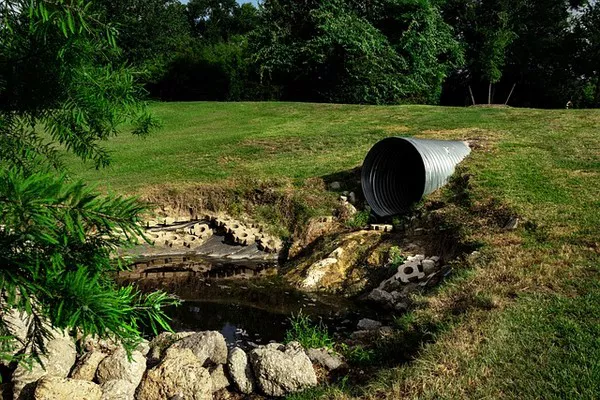Sewage water, often referred to simply as “sewage,” is a term that encompasses wastewater generated from various sources, including households, industries, and commercial establishments. This article aims to provide a comprehensive understanding of sewage water, its composition, sources, and the critical importance of proper sewage management.
Composition of Sewage Water
Sewage water is a complex mixture of domestic, industrial, and commercial wastewater. Its composition can vary significantly based on the sources contributing to it. Typically, sewage water contains a combination of organic and inorganic substances. Organic matter includes human waste, food particles, and other biodegradable materials. Inorganic matter comprises chemicals, heavy metals, and pollutants from industrial processes.
The presence of pathogens, such as bacteria, viruses, and parasites, is another significant aspect of sewage water. These microorganisms pose serious health risks and need to be effectively treated before the water is released back into the environment.
Sources of Sewage Water
Domestic Sources:
The primary contributor to sewage water is domestic households. Human waste, used water from toilets, kitchen sinks, showers, and laundry machines collectively form domestic sewage. The composition of domestic sewage is rich in organic matter, making proper treatment crucial for environmental safety.
Industrial Sources:
Industries discharge a diverse range of pollutants into water bodies, contributing to industrial sewage. This includes chemicals, heavy metals, and other contaminants that vary depending on the type of industry. Effective regulation and treatment of industrial wastewater are essential to prevent environmental degradation.
Commercial Establishments:
Restaurants, hotels, and other commercial establishments produce sewage water containing grease, oil, and other substances that require specialized treatment. Proper management of commercial sewage is vital to prevent the accumulation of harmful pollutants in water bodies.
Importance of Sewage Treatment
Public Health:
Untreated sewage water poses significant risks to public health. Pathogens present in sewage can cause waterborne diseases, such as cholera, dysentery, and typhoid. Effective sewage treatment is crucial to eliminate or reduce these risks and safeguard public health.
Environmental Protection:
Uncontrolled discharge of untreated sewage can lead to the contamination of water bodies, negatively impacting aquatic ecosystems. Excessive nutrients in sewage water, such as nitrogen and phosphorus, can lead to eutrophication, causing oxygen depletion and harm to aquatic life.
Water Resource Conservation:
Proper treatment and recycling of sewage water contribute to water resource conservation. Treated sewage water, also known as reclaimed water, can be used for non-potable purposes like irrigation, industrial processes, and cooling systems, reducing the demand on freshwater resources.
Sewage Treatment Processes
Preliminary Treatment: The first step involves the removal of large solids through physical processes like screening and sedimentation. This helps protect downstream treatment processes and prevents damage to equipment.
Primary Treatment: In this phase, suspended and settleable solids are further removed through sedimentation. Primary treatment aims to reduce the organic load in sewage water.
Secondary Treatment: Secondary treatment involves biological processes where microorganisms break down organic pollutants. Common methods include activated sludge treatment and trickling filters. This stage significantly reduces the concentration of organic matter and pathogens.
Tertiary Treatment: Tertiary treatment is a polishing step that further improves water quality. It may involve advanced processes like filtration, chemical treatment, or the use of ultraviolet (UV) light to eliminate remaining contaminants.
Disposal or Reuse: The final step is the responsible disposal of treated sewage water. Depending on the quality achieved through the treatment process, the water can be safely discharged into water bodies or reused for non-potable purposes.
Challenges in Sewage Management
Infrastructure Limitations: In many regions, outdated or inadequate sewage infrastructure poses a significant challenge. Upgrading and expanding sewage treatment facilities are essential to accommodate growing populations and urbanization.
Industrial Compliance: Ensuring industrial compliance with environmental regulations remains a challenge. Strict monitoring and enforcement are necessary to prevent the release of harmful pollutants into water bodies.
Public Awareness: Lack of awareness regarding the importance of proper sewage management and its impact on public health and the environment is a persistent challenge. Education campaigns are crucial to promote responsible water usage and disposal practices.
Conclusion
Sewage water is a complex mixture that requires careful management to protect public health and the environment. Effective sewage treatment processes are essential in reducing the impact of contaminants and pathogens, ensuring the responsible use and disposal of wastewater. As communities continue to grow, it is imperative to invest in modern infrastructure and raise awareness to address the challenges associated with sewage management. Only through collective efforts can we achieve sustainable and responsible sewage practices, preserving water quality for current and future generations.

